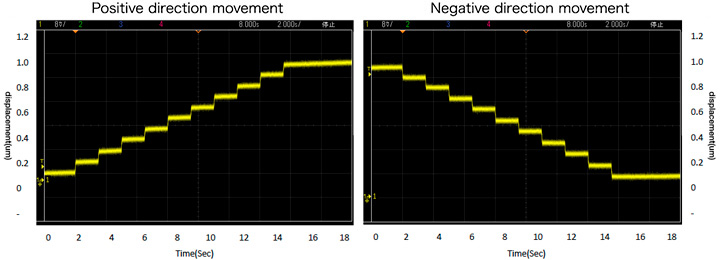- HOME >
- Motorized Stages Guide >
- Measurement of Linear Stage Accuracy
- Measurement of Linear Stage Accuracy
- Measurement of Rotation Stage Accuracy
- Measurement of Goniometer Stage Accuracy
- Accuracy Verification
- Stepping Motors Guide
- Linear / Rotation / Goniometer
- GS/CS series Guide
- SGMV series Translation Motorized Stages AC servo Motor
- Vacuum Compatible Motorized Stage Guide
- Controllers
- Piezo Guide
- Drivers

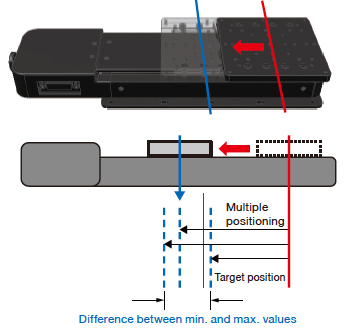
Positioning is performed successively from the reference position in one direction at a fixed interval across the range of travel. The difference between the target values and measured values at each of the positioning points is calculated, and the difference between the minimum and maximum values is taken to be the positioning accuracy.
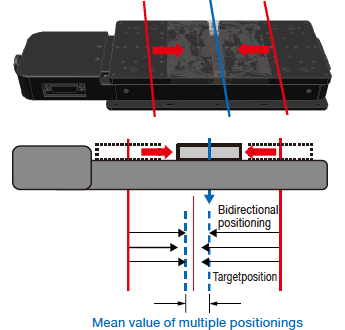
Positioning is performed multiple times in the (+) forward and (-) backward directions on any position (e.g. both ends or center point) of the stage, and the mean value of the deviation amount with respect to the stop position is calculated. The maximum of the numerical values is taken to be lost motion.

Positioning is performed multiple times from the same direction on any position (e.g. both ends or center point) of the stage, and the maximum value of the deviation amount with respect to the stop position is calculated. The maximum of those numerical values is taken to be positional repeatability.
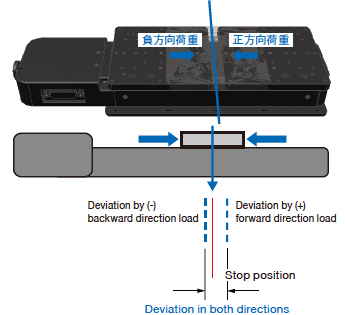
A fixed load is applied to the (+) forward or (-) backward direction on any position (e.g. both ends or center point) of the stage. The total deviation in the respective direction at that time is taken to be backlash.
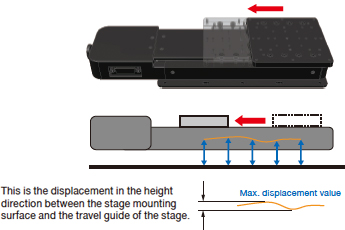
The displacement in the vertical direction of the table during stage motion along the full stroke is taken to be the running parallelism.
Measure the working displacement of the Y axis when referenced to the X axis of the XY axis stage with a square.
The displacement at this time is taken to be the orthogonality of motion.
Place a dial gauge on the Z stage, and measure the displacement with respect to a vertical plate.
The displacement at this time is taken to be the perpendicularity of motion.

Average Lost Motion
0.62µm
Positional Repeatability
↓
0.62µm
Moment stiffness is the stage strength against load exerted at a point away from the center of the table face.
(The center of the table face does not match the center of gravity of work.)
It indicates the degree of tilt of the table face (sec) when 1N load is exerted at a point 1cm away from the center of the stage face.

Pitch is the angle displacement of the table face in the pitch direction while the stage is in motion.
It indicates the maximum angle displacement during full travel.
It indicates the parallelism of the table fixed on the stage against the base plane.
Yaw is the angle displacement of the table face in the yaw direction while the stage is in motion.
It indicates the maximum angle displacement during full travel.
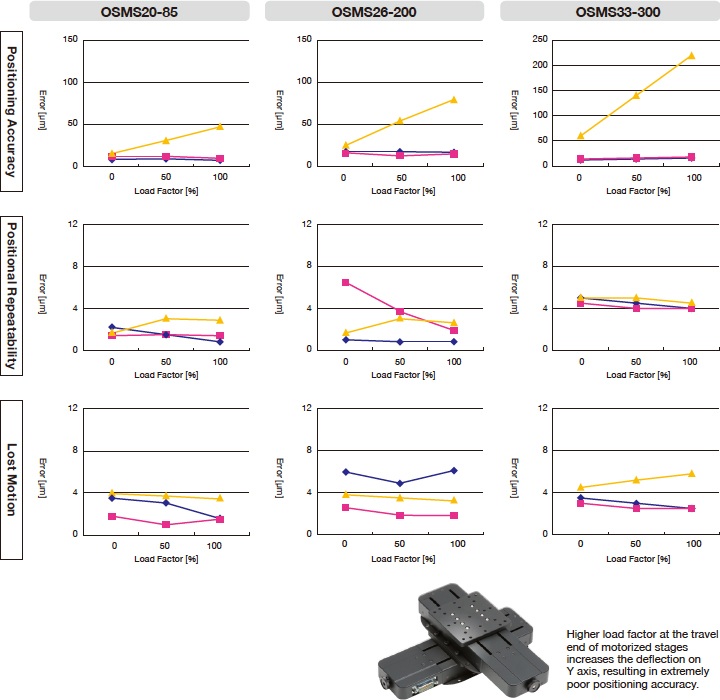

The incremental when the stage is finely positioned at any three positions (center and both ends) is defined as minimum incremental motion(MIM).
To verify the MIM, the stage is finely positioned at three positins in positive direction and negative direction of 10 points for linear stage. Or positioned in CCW direction and CW direction for rotation stage. Then the responsivity is observed.
A capacitance sensor for linear stage and auto collimater for rotation stage is used to observe the incrementally.
